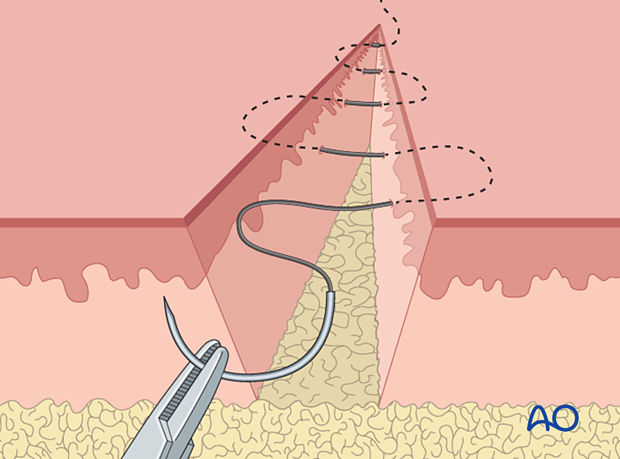Lateral approach to the pediatric distal fibula
1. General considerations
A longitudinal lateral incision is the standard approach to the distal fibula.
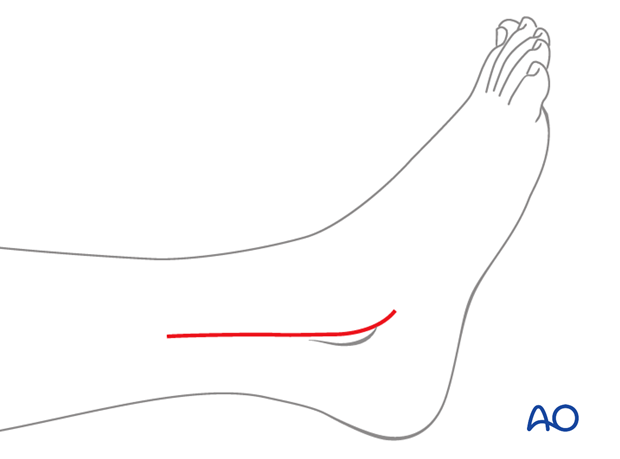
2. Skin incision
The lateral incision is typically placed at the posterior border of the fibula so that a plate does not lie directly beneath the incision.
The incision should be centered at the fracture site and extended proximally and distally as needed.
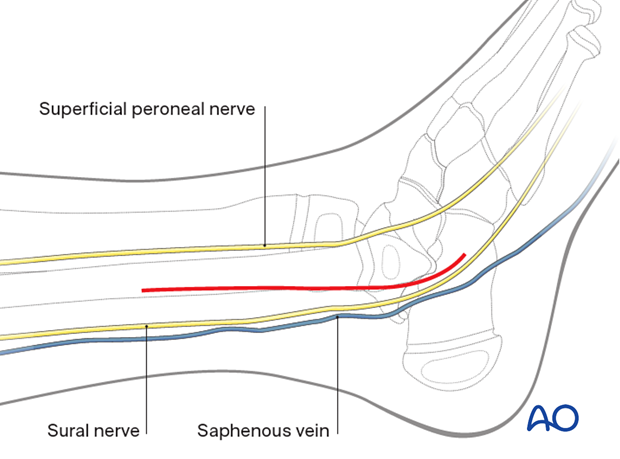
3. Surgical dissection
The plane of dissection is between the peroneus tertius anteriorly and the peroneus longus and brevis posteriorly.
Protection of the soft tissues from further injury is of fundamental importance.
Identify and protect the superficial peroneal nerve, especially in the proximal part of an anterior incision.
When dissecting posteriorly, take care not to damage the short saphenous vein and the sural nerve.
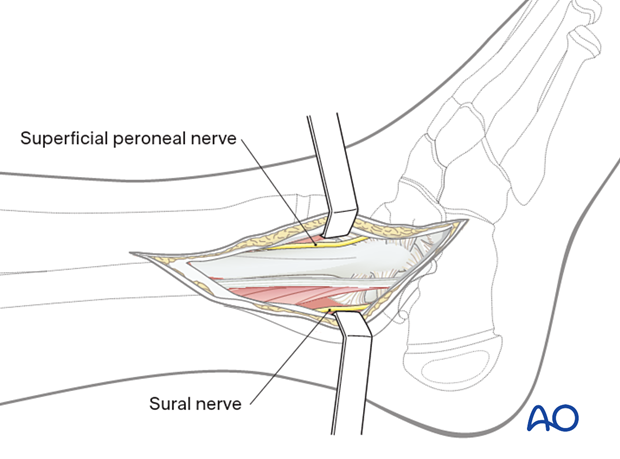
Periosteal stripping reduces the blood supply of the bone and should be limited to exposing the fracture site.
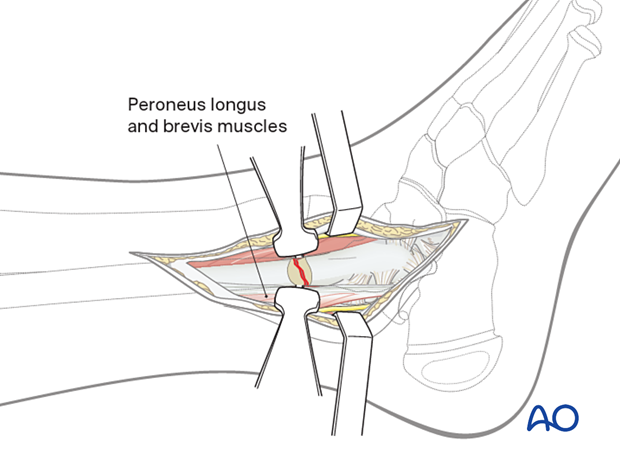
4. Wound closure
After careful hemostasis, close the subcutaneous tissue and skin separately. Subcuticular, absorbable skin sutures may be used if the condition of the soft tissues permit it.
